Scottish Marine and Freshwater Science Volume 5 Number 13: Population consequences of displacement from proposed offshore wind energy developments for seabirds breeding at Scottish SPAs
Report on a project which aimed to develop a model to estimate the population consequences of displacement from proposed offshore wind energy developments for key species of seabirds breeding at SPAs in proximity to proposed Forth/Tay offshore wind farm d
Appendix C. Detailed foraging model structure
The foraging model has a modular structure, following a logical sequence of events, processes and behavioural decisions to shape model output. There are fourteen modules called upon by the main model file, each of which performs a specific section of the foraging model (Figure C. 1).
The most crucial modules are those that determine bird flights (S10), energy and time budgets (S12) and change in body mass for adults and chicks (S13). The logical flow of the processes and decisions within each of these modules is detailed in the flow charts below, Figure C. 1 to Figure C. 5.
Figure C. 1. An outline of the logical flow for the model. Sections 10, 12 and 13 and expanded below.
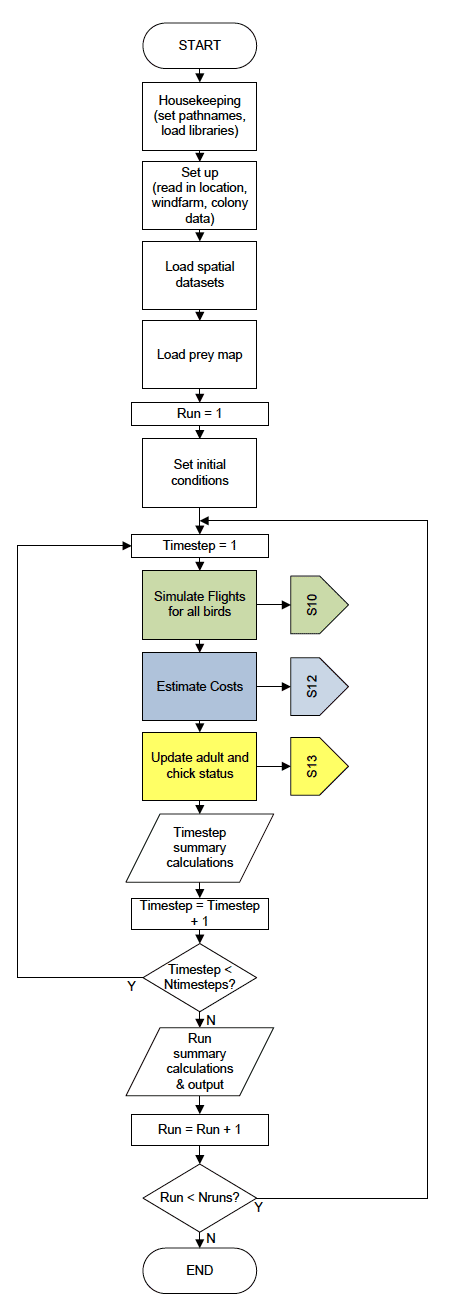
Figure C. 2 The logical flow for the selection of foraging sites for each bird in the simulation at the start of each time step.
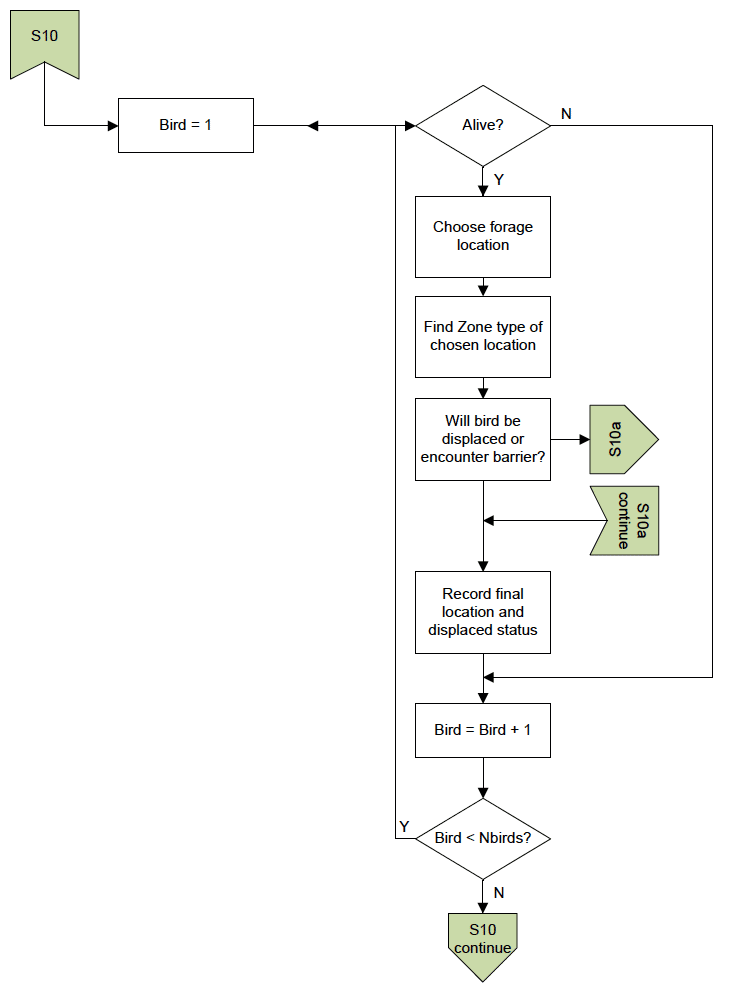
Figure C. 3. The logical flow for how displacement and barrier effects impact upon individual birds at within each time step of the foraging model.
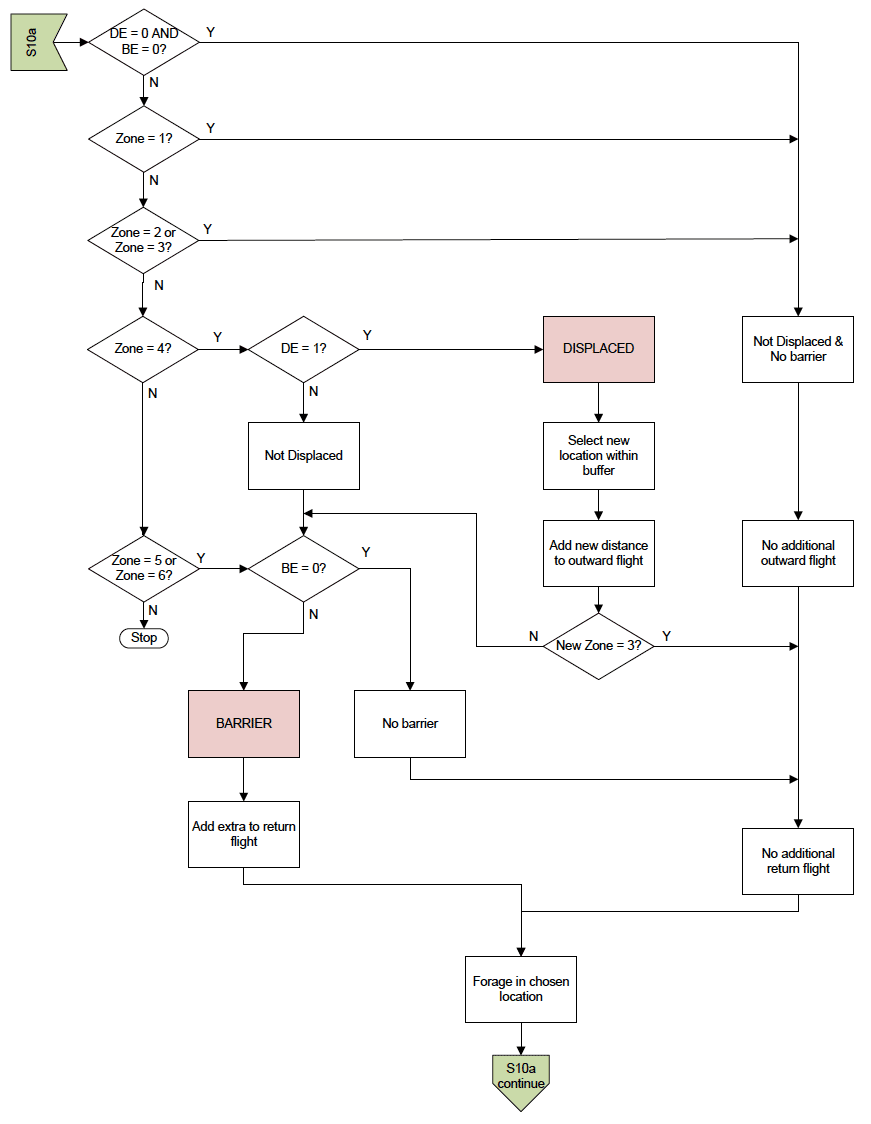
Figure C. 4 The logical flow for foraging behaviour by each individual bird each timestep
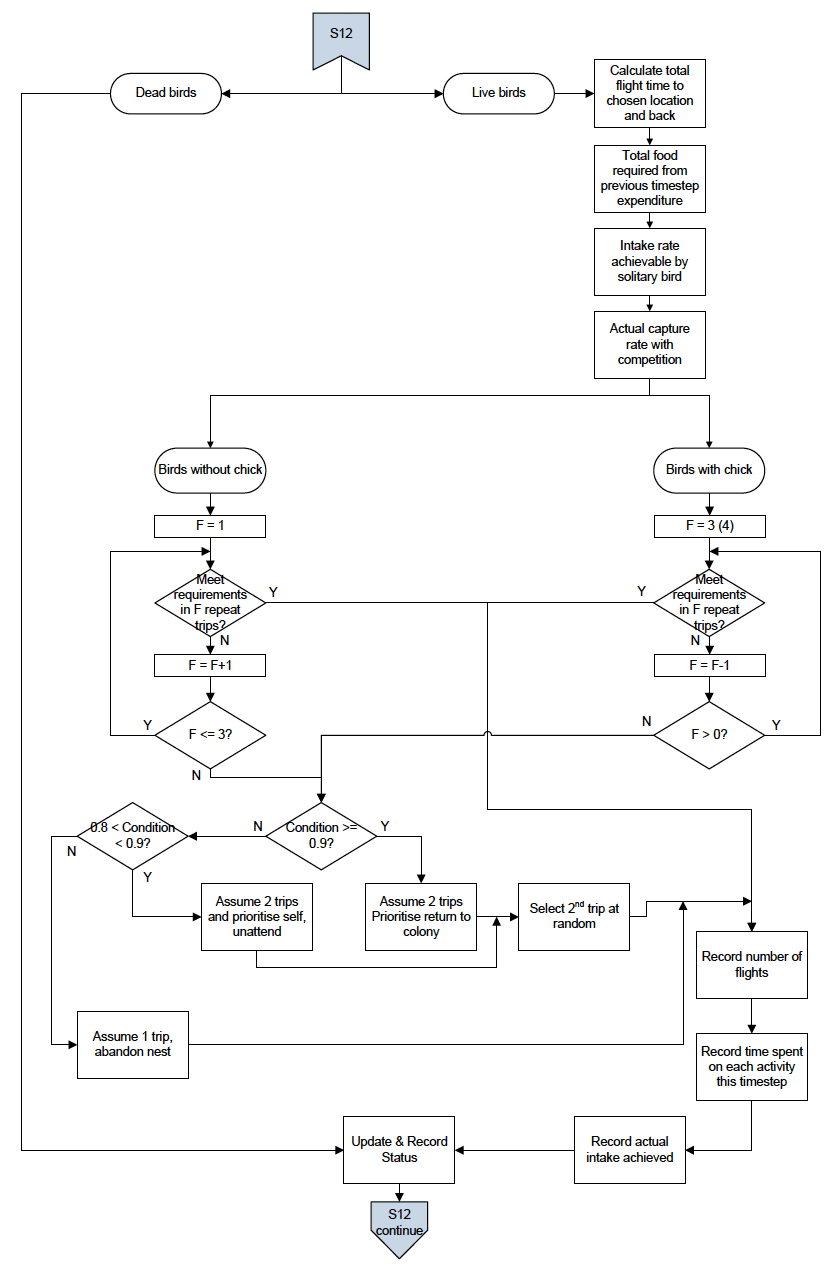
Figure C. 5 The logical flow within the model to determine the change of body condition of adults based on actual intake and the effect on the chick if unattended.
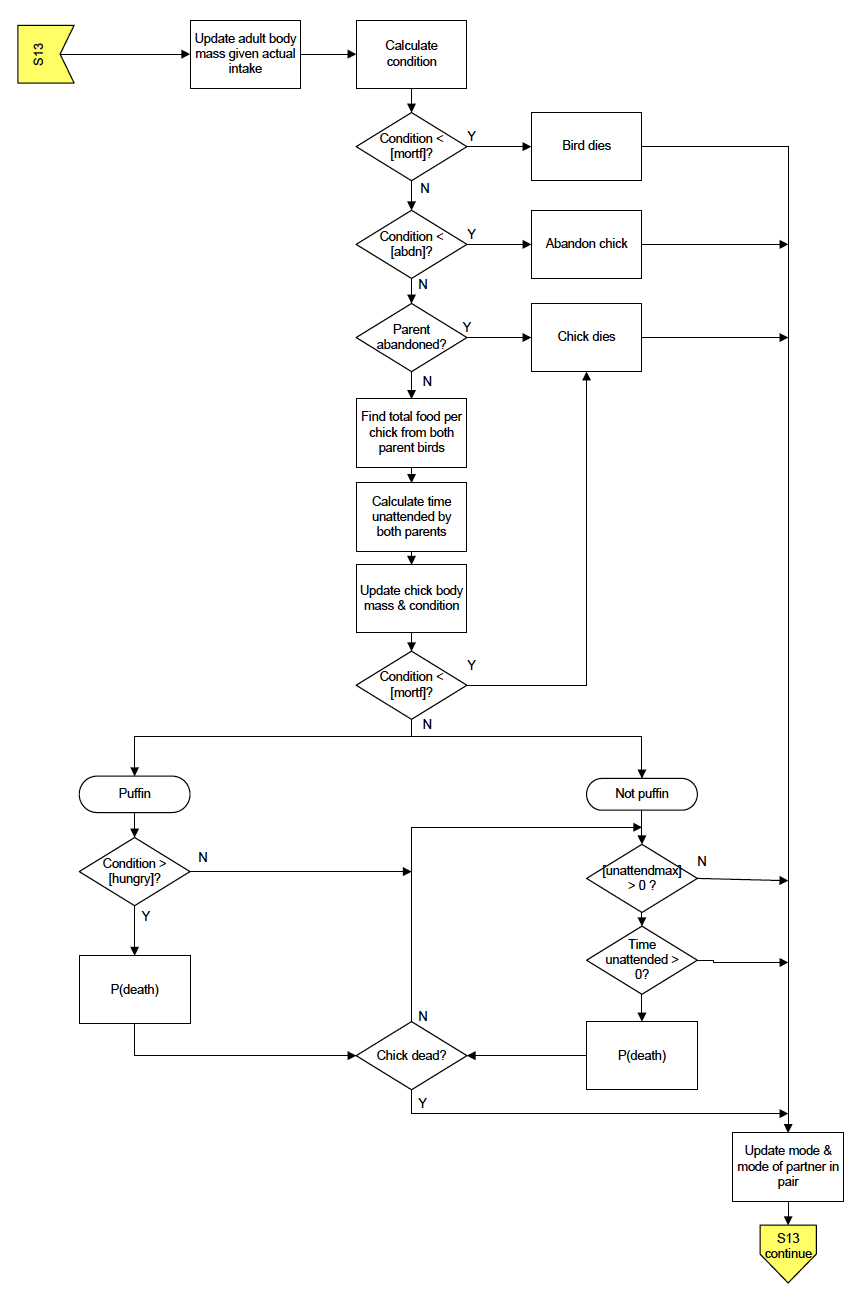
Contact
There is a problem
Thanks for your feedback